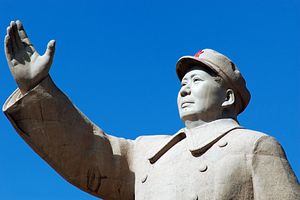“Who are our enemies? Who are our friends?” Mao Zedong called this “a question of the first importance” and fittingly so. These words acted as a fundamental creed throughout the revolutionary and Maoist period. If there is one consistency in Communist Party behavior, both in and out of power, it is the ability to identify perceived enemies and deal with them.
In the moral universe that used to prevail for the CCP, this was an easy enough business. There were those that were for it and those that were against it. In this context, it is pretty simple to pick whom to target. The Party has had enemies outside itself and enemies within it. But historically it has been able to decide on where to fight and where to compromise. If survival is the benchmark of success, after over nine decades in existence we could say that the Party picked a successful strategy, at least up till now. The CCP continues to exist and on many levels thrives. Its enemies were either neutralized or eliminated. It won.
But these days, the enemies are becoming harder to identify. Events in Hong Kong, Taiwan, and the mainland itself over the last half year illustrate this. Take Taiwan. For the Party, the situation was simple enough– until 2014. The KMT became a sort of “friend who was once an enemy.” The CCP could do deals with and tolerate the KMT; the DPP, meanwhile, was an “enemy” the CCP largely shunned. The Party worked for outcomes in democratic Taiwan that it felt helped its “friend” (short of overt, open support, which Beijing knew would backfire), signing trade deals that even analysts in Taiwan agreed benefited the island more than the mainland, at least in immediate returns. And the CCP quietly agitated against the return of its “enemy,” the DPP.
But the Sunflower Movement belonged to neither of these camps. Led by disaffected and largely young activists, these protestors expounded a set of demands and grievances that were critical of both established parties. The protesters were fed up with the establishment, period. And the long term impact on Taiwanese politics will be more complexity: a new, more amorphous third force that resists easy categorization as either DPP or KMT. How does the mainland deal with this? Who are its Taiwanese friends and enemies now?
The unrest in Hong Kong is also not straightforward. Beijing can either radically compromise on the proposals it has made for the constitutional changes (unlikely) or start to brand the many hundreds of thousands that have protested over the summer and into the autumn as enemies. The latter choice would mean blacklisting a whole generation of young Hongkongers. If the enemy/friend discourse prevails, then the Communist Party is going to have to live with decades of disaffection and resentment. That is not sustainable. It will destroy the very thing the Party aims for – a commercially vibrant, stable city.
Finally, in China itself, the life sentence given to Uyghur scholar Ilham Tohti in September messes up the neat enemy/friend dichotomy. Tohti was largely seen as a moderate, someone who in his public utterances never challenged the legitimacy of the Communist Party itself. To paint him as a diehard enemy of the Party’s management of Xinjiang is to stretch the bounds of opposition way beyond their traditional limits.
Here is the current dilemma. If the Party is wholly right in its domestic and geopolitical strategy, and if circumstances work in its favor, then Beijing can simply paint the various forces thwarting and frustrating it today as enemies and deal with them accordingly. But politics in any context is never a game of perfect circumstances and outcomes. The likelihood is that, far from such a neat outcome, there will need to be either compromise or conflict.
In Hong Kong, Taiwan, and even domestic policy, the Party now needs to use more innovative thinking to find answers if it really wants to avoid a messy finish. If it stands by the Manichean approach of seeing the world divided into either supporters or enemies, then its great mission to bring modernity to China might end up causing the most primitive of all results – bloodshed, violence and unrest. Let’s hope the leaders in Beijing change their historic template and jettison the enemy/friend mindset. They are now living in a world of grey where such vivid divisions of black and white no longer apply.

































